Have you ever wondered about integration in API development or how to become familiar with the concept?
In this blog, we will discuss one of the integration technologies that is very easy and fun to learn, IBM ACE.
What is IBM ACE?
IBM ACE stands for IBM App Connect Enterprise. It is an integration platform that allows businesses to connect various applications, systems, and services, enabling smooth data flow and communication across diverse environments. IBM ACE supports the creation of Integrations using different patterns, helping organizations streamline their processes and improve overall efficiency in handling data and business workflows.
Through a collection of connectors to various data sources, including packaged applications, files, mobile devices, messaging systems, and databases, IBM ACE delivers the capabilities needed to design integration processes that support different integration requirements.
One advantage of adopting IBM ACE is that it allows current applications to be configured for Web Services without costly legacy application rewrites. By linking any application or service to numerous protocols, including SOAP, HTTP, and JMS, IBM ACE minimizes the point-to-point pressure on development resources.
Modern secure authentication technologies, including LDAP, X-AUTH, O-AUTH, and two-way SSL, are supported through MQ, HTTP, and SOAP nodes, including the ability to perform activities on behalf of masquerading or delegated users.
How to Get Started
Refer to Getting Started with IBM ACE:
https://www.ibm.com/docs/en/app-connect/12.0?topic=enterprise-get-started-app-connect
For installation on Windows, follow the document link below. Change the IBM App Connect version to 12.0 and follow along:
https://www.ibm.com/docs/en/app-connect/11.0.0?topic=software-installing-windows
IBM ACE Toolkit Interface

This is what an IBM ACE toolkit interface looks like. You can see all the applications/APIs and libraries you created during application development. In Pallete, you can see all the nodes and connectors needed for application development.
Learn more about nodes and connectors:
https://www.ibm.com/docs/en/app-connect/12.0?topic=development-built-in-nodes
IBM ACE provides flexibility in creating an Integration Servers and Integration Node where you can deploy and test your developed code and application, which you can do with the help of mqsi commands.
How to Create a New Application
- To create a new application, click on File -> New -> Application.
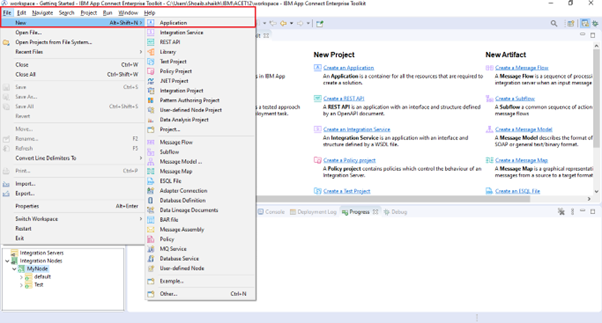
- Give the Application a name and click finish.
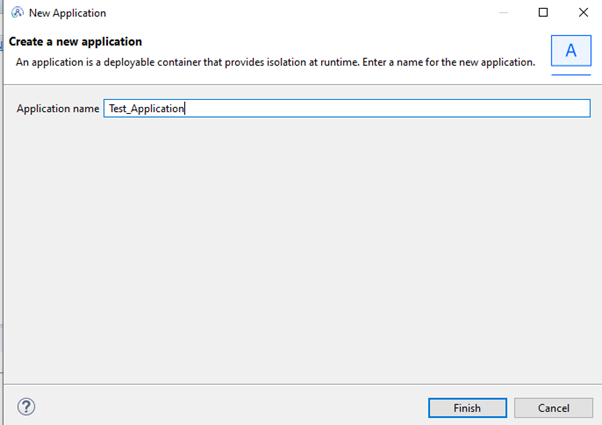
- To add a message flow, click on New under Application, then Message Flow.
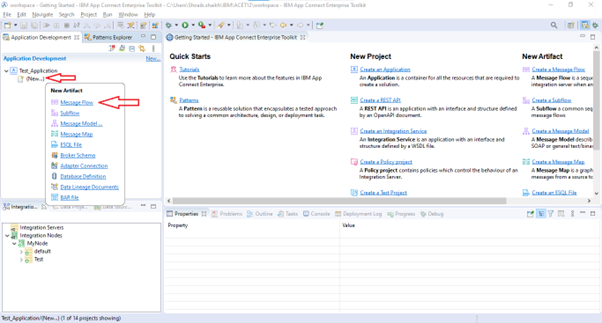
- Give the message flow a name and click finish.
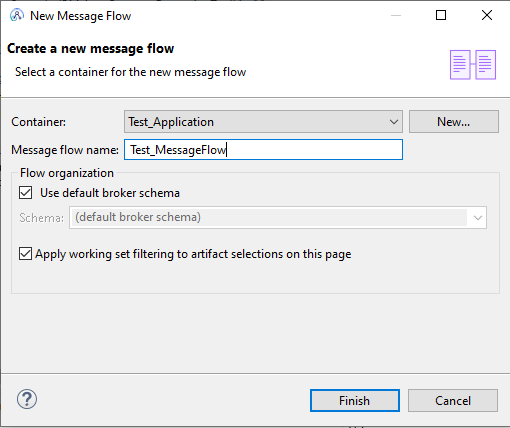
- Once your flow is created, double-click on its name. The message flow will open, and you can implement the process.
- Drag the required node and connectors to the canvas for your development.
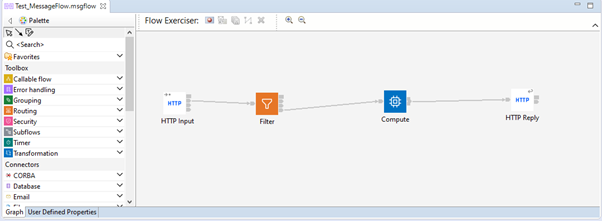
How to Create an Integration Node and Integration Server
- Open your command window for your current installation.
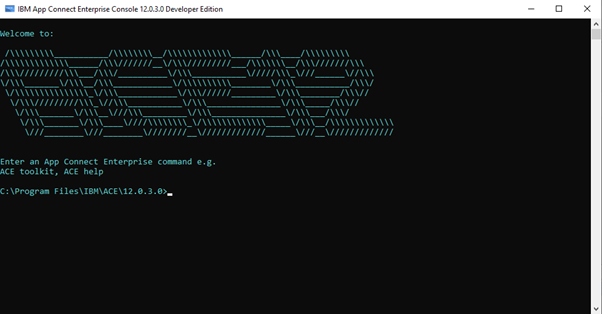
- To create an Integration server, run the following command in the command shell and specify the parameter for the integration server you want to create: mqsicreateexecutiongroup IBNODE -e IServer_2
- To create an Integration node, run the following command in the command shell and specify the parameter for the integration node you want to create.
- For example, If you want to create an Integration node with queue manager ACEMQ, use the following command: mqsicreatebroker MYNODE -i wbrkuid -a wbrkpw -q ACEMQ
How to Deploy the Application
- Right-click on the application, then click on Deploy.
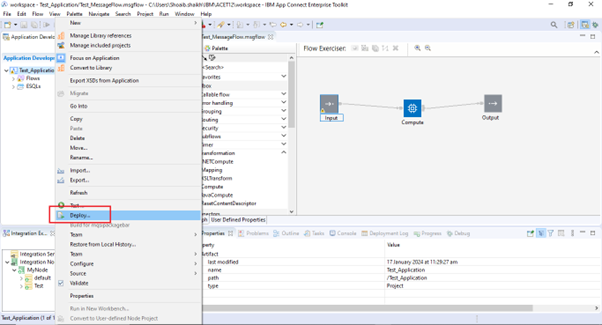
- Then click on the Integration node and Finish.

Advantages of IBM ACE
- ACE offers powerful integration possibilities. Allowing for smooth communication between different applications, systems, and data sources.
- It supports a variety of message patterns and data formats, allowing it to handle a wide range of integration scenarios.
- It meets industry standards, ensuring compatibility and interoperability with many technologies and protocols.
- ACE has complete administration and monitoring features, allowing administrators to track integration processes’ performance and health.
- The platform encourages the production of reusable integration components, which decreases development time and effort for comparable integration tasks.
- ACE offers comprehensive security measures that secure data during transmission and storage while adhering to enterprise-level security standards.
- ACE offers a user-friendly development environment and tools to design, test, and deploy integration solutions effectively.
Conclusion
In this introductory blog, we have explored IBM ACE and how to create a basic application to learn about this integration technology.
Here at Perficient, we develop complex, scalable, robust, and cost-effective solutions using IBM ACE. This empowers our clients to improve efficiency and reduce manual work, ensuring seamless communication and data flow across their organization.
Contact us today to explore more options for elevating your business.
 This is what an IBM ACE toolkit interface looks like. You can see all the applications/APIs and libraries you created during application development. In Pallete, you can see all the nodes and connectors needed for application development.
Learn more about nodes and connectors: https://www.ibm.com/docs/en/app-connect/12.0?topic=development-built-in-nodes
IBM ACE provides flexibility in creating an Integration Servers and Integration Node where you can deploy and test your developed code and application, which you can do with the help of mqsi commands.
This is what an IBM ACE toolkit interface looks like. You can see all the applications/APIs and libraries you created during application development. In Pallete, you can see all the nodes and connectors needed for application development.
Learn more about nodes and connectors: https://www.ibm.com/docs/en/app-connect/12.0?topic=development-built-in-nodes
IBM ACE provides flexibility in creating an Integration Servers and Integration Node where you can deploy and test your developed code and application, which you can do with the help of mqsi commands.








